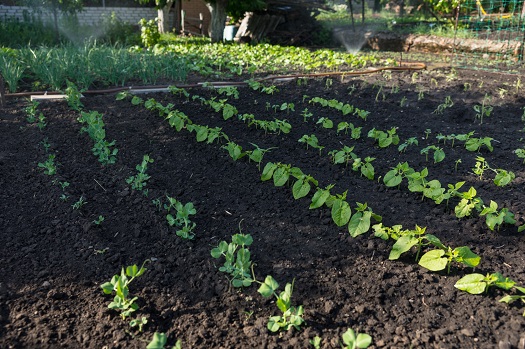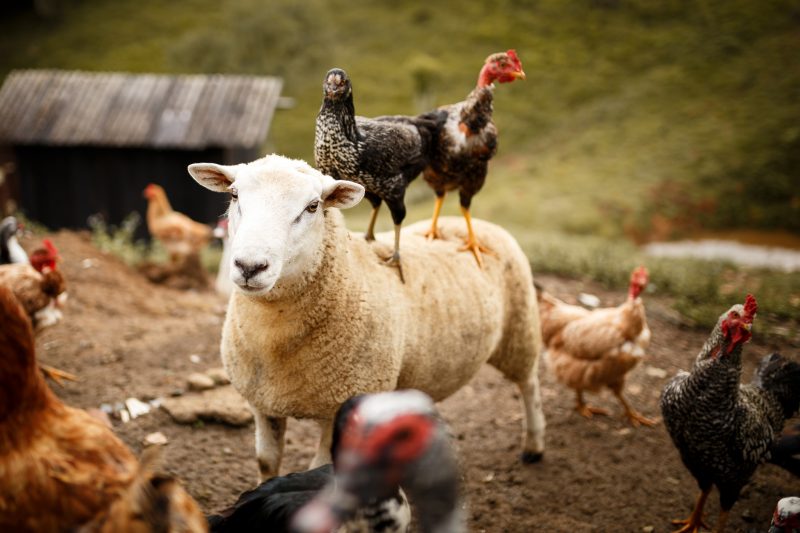Understanding the Possibilities of Self-Sufficiency
Can you live off your own garden? This question has sparked curiosity and ambition in many individuals seeking a more sustainable and self-sufficient lifestyle. Living off your own garden entails producing a significant portion of your food, thereby reducing your reliance on external sources. This approach has numerous potential benefits, including cost savings, improved health, and a reduced environmental footprint. However, it also presents challenges that must be carefully considered and addressed.
The concept of self-sufficiency has gained traction in recent years, fueled by growing concerns over climate change, food insecurity, and the desire for a more authentic connection with nature. Urban farming, in particular, has emerged as a popular movement, inspiring people to transform their backyards, rooftops, and even balconies into productive gardens. By doing so, they contribute to sustainable living and foster a sense of community.
Assessing Your Garden’s Potential
To determine if you can live off your own garden, a thorough assessment of your outdoor space is essential. Various factors, such as climate, soil quality, and available space, play crucial roles in the success of your self-sufficiency endeavor. By carefully evaluating these elements and implementing strategies to maximize your garden’s potential, you can significantly increase your chances of achieving a sustainable lifestyle.
Climate is an essential consideration when planning a self-sufficient garden. Research your local hardiness zone to understand which plants are most likely to thrive in your area. Embrace seasonal gardening by focusing on crops that flourish during different times of the year. Utilize cold frames, greenhouses, or hoop houses to extend your growing season and protect plants from harsh weather conditions.
Soil quality is another critical factor in assessing your garden’s potential. Conduct a soil test to determine its pH level, nutrient content, and drainage capabilities. Based on the results, amend your soil with organic matter, such as compost or well-rotted manure, to improve its structure and fertility. Implement crop rotation and companion planting to maintain soil health, prevent pests and diseases, and optimize your garden’s productivity.
Maximizing your garden’s potential often involves creatively utilizing the space available. Employ vertical gardening techniques, such as trellises, wall planters, or hanging baskets, to grow vining crops and save valuable ground space. Consider adopting square-foot gardening or container gardening if your outdoor area is limited. These methods enable you to grow a wide variety of plants in a small space, thereby increasing your garden’s productivity and potential for self-sufficiency.
Growing a Balanced Diet: Essential Crops for Self-Sufficiency
Achieving self-sufficiency by living off your own garden requires careful planning and consideration of the crops you grow. To ensure a balanced and nutritious diet, it is essential to incorporate a variety of fruits, vegetables, grains, and proteins in your garden. By growing an array of easy-to-grow staples and lesser-known superfoods, you can enrich your meals and enhance your self-sufficiency journey.
Fruits and vegetables are vital components of a balanced diet, providing essential vitamins, minerals, and antioxidants. Prioritize crops that offer high yields and are well-suited to your climate and soil conditions. Some easy-to-grow options include tomatoes, peppers, zucchini, cucumbers, leafy greens, berries, and stone fruits. Additionally, consider incorporating lesser-known superfoods, such as kale, quinoa, and chia seeds, to further enhance the nutritional value of your meals.
Grains are another critical element of a balanced diet, serving as a primary source of carbohydrates and energy. While grains may require more space and resources than fruits and vegetables, they offer long-term sustainability and versatility. Consider growing staple crops such as wheat, corn, rice, or oats, depending on your climate and available space. Alternatively, explore lesser-known grains like amaranth, millet, or teff, which often boast impressive nutritional profiles and can be grown in various conditions.
Proteins are essential for maintaining muscle mass, supporting immune function, and providing energy. While raising livestock in your backyard can contribute to a sustainable protein source, it may not be feasible or desirable for all gardeners. In these cases, incorporating protein-rich plants, such as beans, lentils, peas, or soybeans, can help meet your nutritional needs. Additionally, consider growing nuts and seeds, such as almonds, walnuts, sunflower seeds, or pumpkin seeds, for a protein-packed and delicious addition to your meals.
Preserving Your Harvest: Techniques for Long-Term Storage
Preserving your garden’s bounty is crucial for achieving year-round self-sufficiency when living off your own garden. Various techniques, such as canning, freezing, and dehydration, can help extend the life of your produce and ensure a consistent supply of nutritious food. By mastering these methods and employing proper food storage practices, you can maintain a sustainable lifestyle even during the off-seasons.
Canning is a time-honored preservation technique that involves sealing food in airtight containers, such as jars or cans, and heating them to a high temperature to kill bacteria and create a vacuum seal. This method is particularly effective for fruits, vegetables, sauces, and pickles. When canning, always follow established recipes and guidelines to ensure food safety and prevent spoilage.
Freezing is a convenient and straightforward preservation method that retains the nutritional value and flavor of your produce. Blanching, a process that briefly immerses vegetables in boiling water before plunging them into ice water, can help maintain color, texture, and nutritional content during freezing. Be sure to store frozen food at optimal temperatures and consume it within recommended timeframes to prevent freezer burn and loss of quality.
Dehydration is an ancient preservation technique that removes moisture from food, inhibiting bacterial growth and extending shelf life. Modern dehydrators offer efficient and consistent results, making it easy to preserve fruits, vegetables, and herbs. Once dehydrated, store your food in airtight containers in a cool, dark place to preserve its quality and prevent recontamination.
Proper food storage is essential for maintaining the longevity and quality of your preserved produce. Invest in appropriate storage containers, such as glass jars, freezer-safe bags, or vacuum-sealed bags, to protect your food from air, light, and moisture. Regularly inspect your stored food for signs of spoilage, and consume it in a timely manner to ensure maximum nutritional benefits and prevent waste.
Raising Livestock in Your Backyard: Expanding Your Garden’s Potential
Integrating small livestock into your urban garden can provide a sustainable source of protein, further enhancing your self-sufficiency journey. Chickens and rabbits are popular choices for backyard farming, offering fresh eggs and meat while contributing to the garden’s ecosystem. However, legal considerations, care requirements, and potential impacts on your garden must be carefully evaluated before diving into backyard livestock.
Chickens are an excellent option for urban farmers, providing a consistent supply of fresh eggs and manure, which can be composted and added to the garden as a natural fertilizer. Before acquiring chickens, research local regulations, as some cities and homeowners associations have restrictions on backyard poultry. Additionally, ensure you can provide adequate space, shelter, and care for your chickens, including protection from predators and regular health checks.
Rabbits are another sustainable protein source for urban gardeners, offering a high meat-to-feed ratio and minimal environmental impact. Like chickens, rabbits produce manure that can be composted and used as a fertilizer in the garden. However, similar to chicken ownership, local regulations and care requirements must be carefully considered before introducing rabbits to your backyard. Be prepared to provide proper housing, feeding, and healthcare for your rabbits, as well as a plan for managing waste and potential noise disturbances.
Introducing small livestock to your garden can have both positive and negative impacts on the ecosystem. Chickens and rabbits can help control pests, provide natural fertilizer, and contribute to the overall biodiversity of your garden. However, they may also disrupt the soil structure, compact the ground, and potentially introduce parasites or diseases. To mitigate these risks, ensure you have a plan for managing waste, maintaining cleanliness, and monitoring the health of your livestock and garden.
Living Off Your Garden: Real-Life Success Stories
Transitioning to a lifestyle where you live off your own garden can be a rewarding yet challenging endeavor. Numerous individuals and families have successfully embraced this self-sufficient journey, cultivating not only their food but also a deeper connection with nature and their community. By sharing their inspiring stories, we can learn from their experiences, challenges, achievements, and lessons learned.
One such success story comes from the Johnson family, who transformed their suburban backyard into a thriving urban farm. By implementing raised beds, vertical gardening, and a small chicken coop, they now produce over 70% of their fruits, vegetables, and protein needs. Their journey involved overcoming initial skepticism from neighbors, navigating local regulations, and investing time and resources into learning and experimenting with various gardening techniques.
Another inspiring tale is that of Sarah, a single mother who turned her small city lot into a productive garden to support her family. Through intensive permaculture practices, she manages to grow a wide variety of fruits, vegetables, and herbs, as well as raise chickens and rabbits for protein. Sarah’s story highlights the importance of creativity, resilience, and a strong commitment to self-sufficiency.
These success stories demonstrate that living off your own garden is not only possible but can also lead to a more fulfilling and sustainable lifestyle. By incorporating innovative gardening techniques, raising small livestock, and engaging with local resources and networks, you too can embark on this rewarding journey.
Navigating Regulations: Legal Considerations for Urban Farming
Urban farming has gained popularity in recent years, with more people recognizing the benefits of self-sufficiency and sustainable living. However, before diving into the world of urban agriculture, it’s crucial to understand the legal aspects, including zoning laws, building codes, and homeowners association regulations. By familiarizing yourself with these rules and obtaining the necessary permits, you can ensure a smooth and successful urban farming experience.
Zoning laws are local regulations that dictate how land can be used within a municipality. These laws may restrict or limit the types of activities allowed in residential areas, including urban farming. Common restrictions include the size of gardens, the presence of livestock, and the construction of structures such as greenhouses or coops. Research your local zoning laws to determine if your urban farming plans are permissible and, if necessary, apply for any required variances or conditional use permits.
Building codes are another essential consideration for urban farmers. These regulations establish minimum standards for construction, ensuring the safety and integrity of structures. When building raised beds, greenhouses, or other urban farming infrastructure, ensure that you adhere to your local building codes. Obtain the necessary permits and hire licensed professionals, if required, to ensure that your projects meet safety standards and comply with regulations.
Homeowners associations (HOAs) are organizations that govern residential communities and enforce specific rules and covenants. These regulations may limit or restrict urban farming activities, such as the presence of livestock, the appearance of gardens, or the construction of structures. Before embarking on your urban farming journey, review your HOA’s covenants, conditions, and restrictions (CC&Rs) to ensure that your plans align with their guidelines. If necessary, seek approval from the HOA board or apply for a variance to accommodate your urban farming endeavors.
To navigate the complex world of urban farming regulations, consider consulting local government agencies, legal professionals, or experienced urban farmers. Various resources and networks are available to support and guide you through the process, ensuring that your urban farming journey is both legally compliant and personally rewarding.
Joining the Community: Resources and Networks for Urban Farmers
Embarking on the journey to live off your own garden can be both exciting and challenging. To maximize your success and ensure a fulfilling experience, consider engaging with various resources and networks available to support urban farmers. By connecting with like-minded individuals and organizations, you can enhance your self-sufficiency journey, learn from others’ experiences, and contribute to the growing urban farming movement.
Community gardens are a fantastic way to connect with other urban farmers and cultivate a sense of community. These shared spaces offer plots for individuals to grow their own food, often with access to tools, water, and composting facilities. By joining a community garden, you can not only benefit from shared resources but also learn from fellow gardeners and participate in workshops or events. To find a community garden near you, consult local government agencies, non-profit organizations, or online directories.
Cooperatives, or co-ops, are another valuable resource for urban farmers. These member-owned businesses or organizations enable individuals to pool resources, knowledge, and buying power, often resulting in cost savings and increased efficiency. By joining a co-op focused on urban agriculture, you can access discounted supplies, share equipment, and collaborate on projects or initiatives. Additionally, many co-ops offer educational resources and networking opportunities, fostering a supportive environment for urban farmers.
Online forums, social media groups, and blogs are excellent sources of information, inspiration, and support for urban farmers. These platforms connect individuals from around the world, allowing them to share experiences, ask questions, and learn from one another. By participating in online communities, you can tap into a wealth of knowledge, engage with experts and enthusiasts, and stay up-to-date on the latest trends and best practices in urban farming.
By engaging with these resources and networks, you can enrich your urban farming experience, overcome challenges, and contribute to the broader movement towards sustainable living and self-sufficiency. Embrace the power of community and collaboration to maximize your potential as an urban farmer and enhance your journey towards living off your own garden.









